This article dives into effective coping strategies for parents of children with autism, shining a light on various techniques that can really boost their kids' emotional and social growth.
We’ll explore methods like:
These strategies highlight how important it is to tailor interventions and get parents involved in nurturing resilience and adaptability in their children.
Let’s face it, parenting a child with autism can be a rollercoaster ride! You might find yourself juggling different approaches, trying to figure out what works best for your little one. But don’t worry, you’re not alone in this journey!
By sharing relatable experiences and practical tips, we can create a sense of belonging and understanding. Remember, every child is unique, and what works for one might not work for another. That’s why it’s so crucial to find the right fit for your family.
So, let’s explore these strategies together! We’re here to help you every step of the way. If you have any thoughts or experiences to share, feel free to drop a comment! Your insights could really help someone else in our community.
Supporting a child with autism can feel like a winding road, filled with both unique challenges and heartwarming moments. As parents and caregivers, you might find yourselves searching for effective strategies that not only help your child build resilience but also empower them to thrive in different settings.
In this article, we’ll explore ten practical approaches—from visual schedules to positive reinforcement—that can nurture emotional regulation, social skills, and overall well-being in children with autism. Have you ever wondered how these strategies could transform your daily interactions? They might just pave the way for greater independence and confidence in your child.
Let’s dive into these methods together! Exploring these ideas could be the key to a brighter future for both your child and your family. We’re here to help you every step of the way!
At Rori Care, we understand that every child is unique, and that’s why we use Applied Behavior Analysis (ABA) therapy to create examples of coping strategies for autism tailored just for them. It all starts with a thorough assessment to really get to know your child’s specific challenges and strengths. By blending data-driven insights with a compassionate touch, we ensure that each young person receives the most effective interventions, helping them build resilience and adaptability in all sorts of situations.
We believe in empowering parents and caregivers, too! Through education on ABA principles and techniques, we help you actively participate in this journey. This involvement not only strengthens the strategies you can use at home but also boosts your ability to support your child’s behavioral goals. Together, we can improve coping skills by utilizing examples of coping strategies for autism to promote positive outcomes.
Let’s explore this together! We’re here to help you every step of the way!
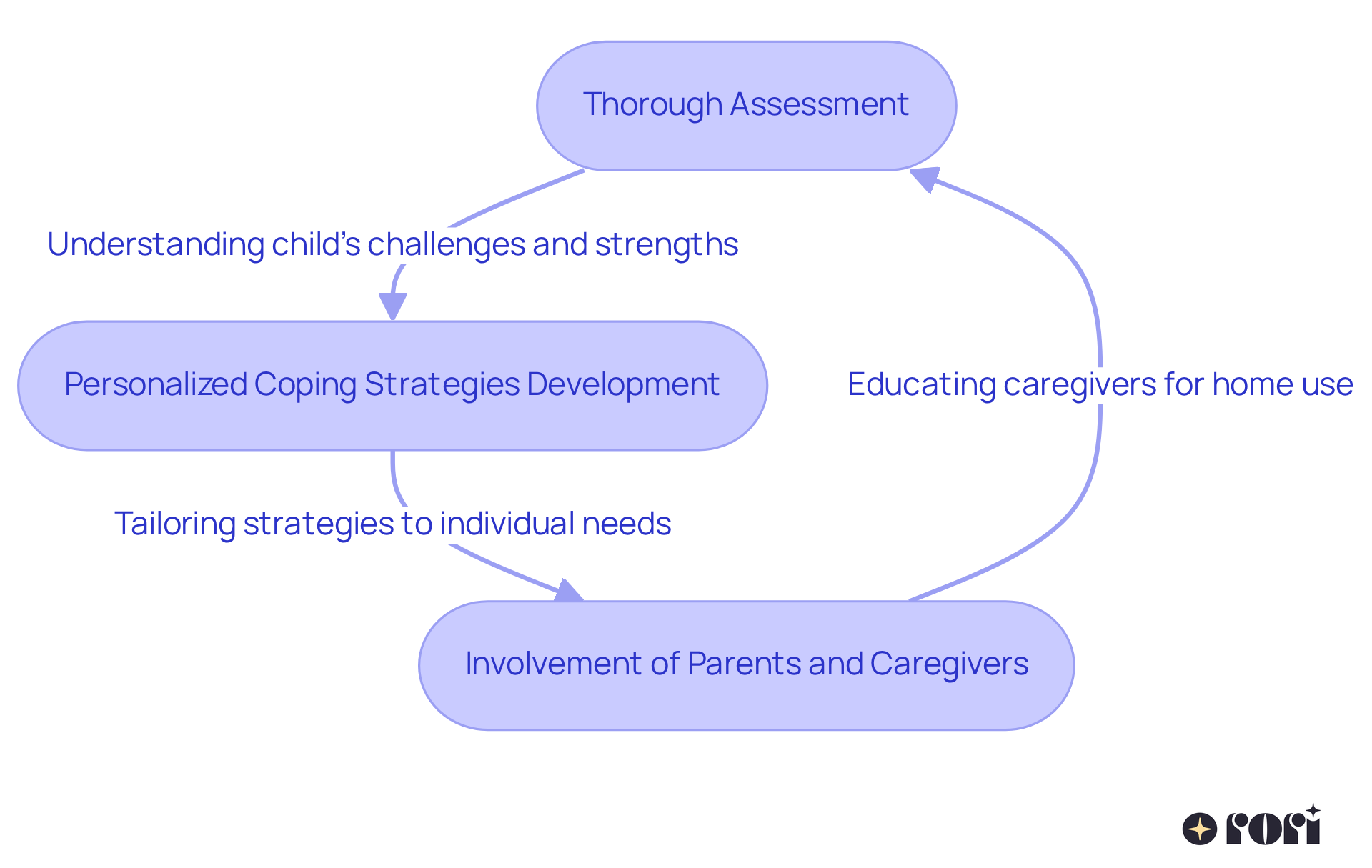
Visual schedules are such helpful tools for kids with autism! They make it easier for little ones to grasp their daily routines. By using pictures or symbols to show different activities, these schedules help kids anticipate what’s coming next. This can really cut down on anxiety and boost their independence.
Parents can easily whip up visual schedules at home by breaking down daily tasks into bite-sized steps. It’s a great way for kids to check off what they’ve accomplished, which not only sharpens their time management skills but also gives them a sense of achievement and control over their surroundings.
Research shows that using visual schedules regularly can lower anxiety levels in autistic youth. They provide a sense of predictability and structure that many kids thrive on. Plus, they can really enhance communication for non-verbal students or those who find verbal instructions tricky. This makes visual schedules one of the important examples of coping strategies for autism support.
Getting kids involved in creating their own visual schedules can also ramp up their engagement and ownership of the process. It’s all about making them feel connected and empowered! So, let’s explore this together and see how visual schedules can make a difference in your child’s life. We’re here to help you every step of the way!
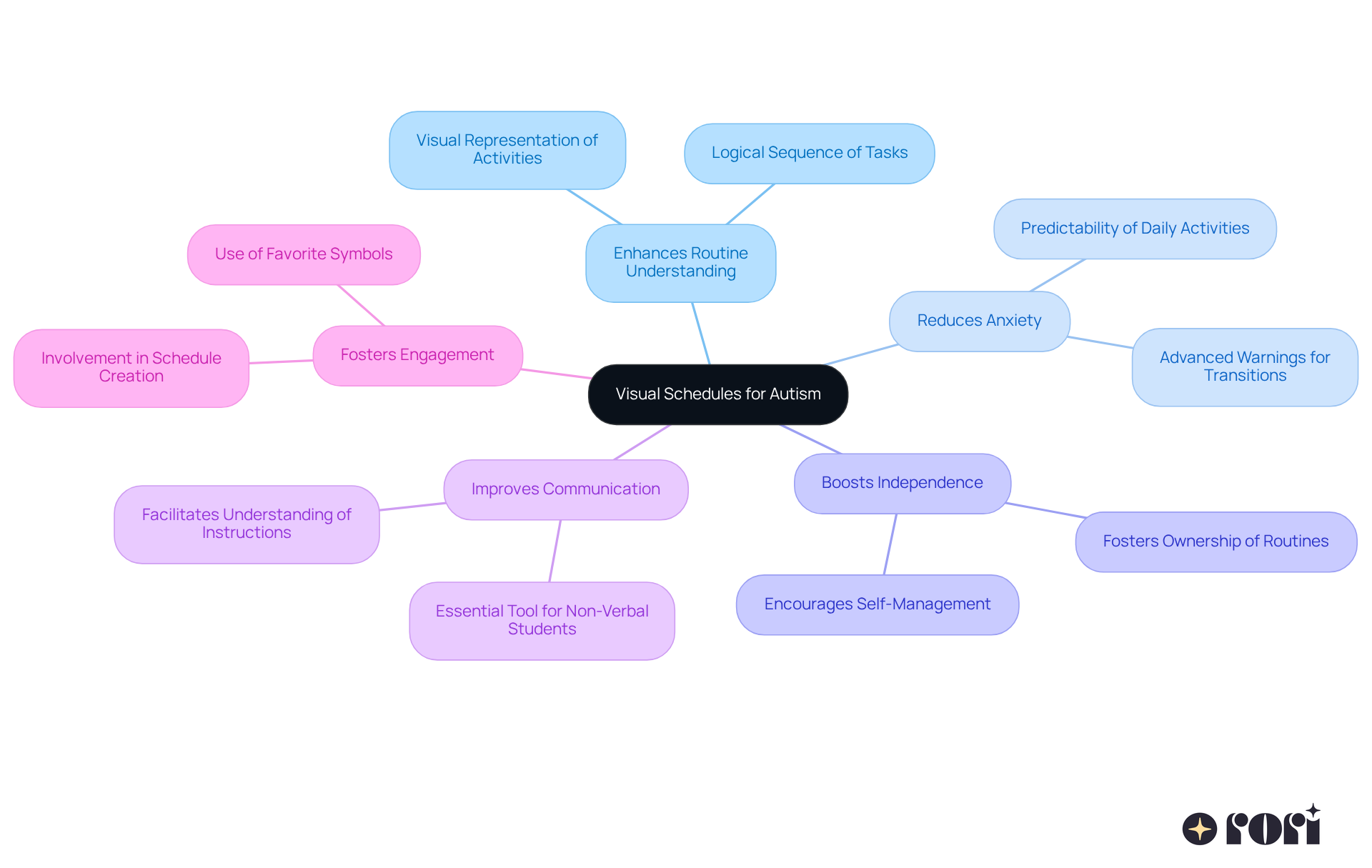
Personalized narratives can be a game-changer for kids with autism, helping them navigate social interactions and understand what’s expected of them. This approach is particularly beneficial for children with Autism Spectrum Disorders, ADHD, Communication Disorders, and Anxiety Disorders, as it boosts their social skills and confidence. By painting a picture of specific situations, sharing others' perspectives, and outlining appropriate responses, these stories prepare young ones for a variety of social encounters.
Research shows that using narrative techniques can significantly reduce anxiety in autistic children, creating a sense of safety in new environments. Parents can craft these stories using simple language and visuals that resonate with their kids, making them relatable and easy to grasp. This method not only enhances social skills but also empowers children to engage more confidently in group settings.
So, how can you create effective social stories? Here are some friendly steps to guide you:
By implementing social stories, you’re providing your child with valuable examples of coping strategies for autism that can enhance social interaction, leading to greater independence and less anxiety. At Rori Care, our clinical leadership team is dedicated to applying ABA principles to help achieve behavioral goals, ensuring these strategies are effectively used to promote neurodiversity and success for our youth. Let’s explore this together!
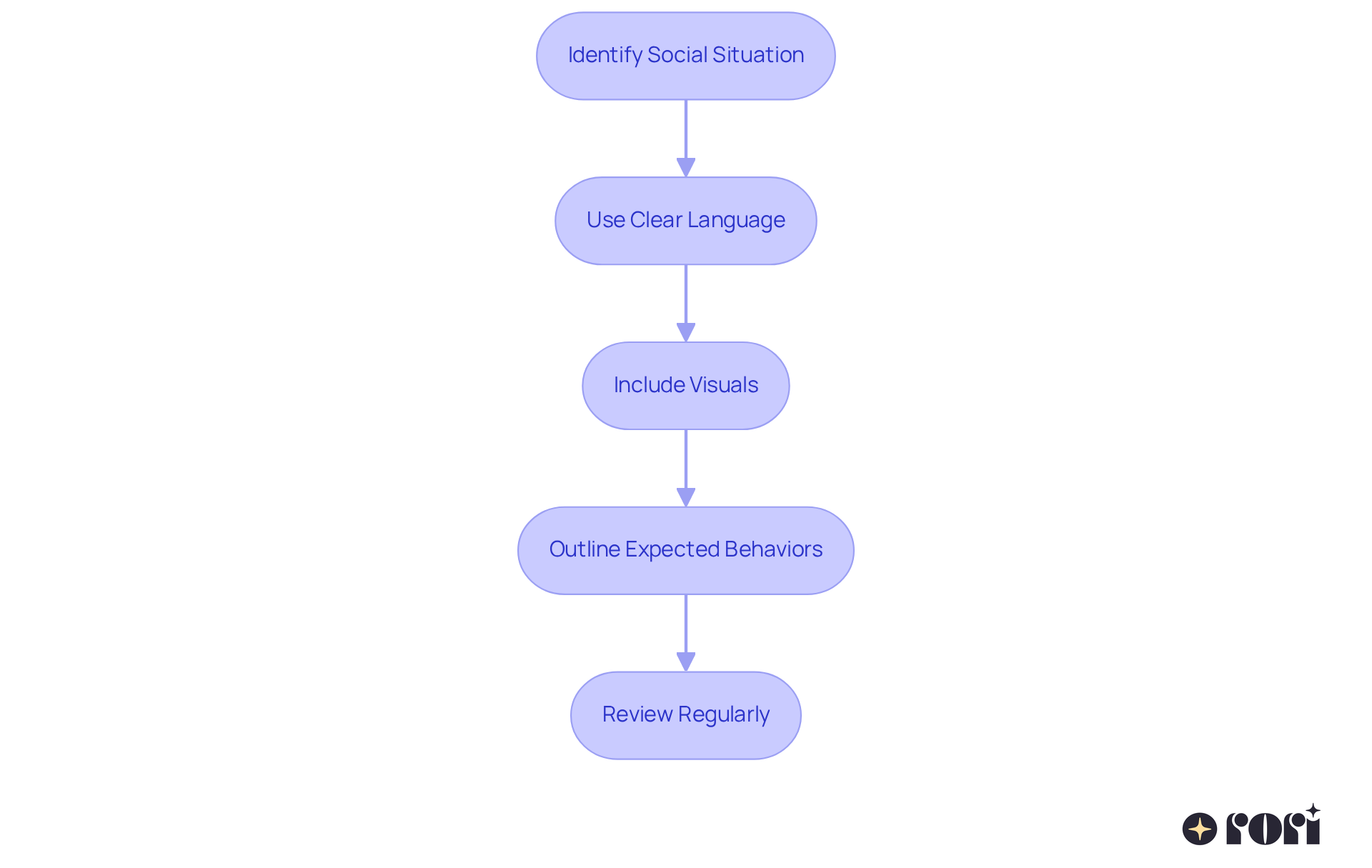
Mindfulness methods, which are examples of coping strategies for autism, such as deep breathing exercises like Cookie Breathing and guided imagery, can really help kids with autism manage their emotions. These practices encourage focusing on the present moment, which can significantly ease anxiety and promote a sense of calm. Research shows that mindfulness can lower stress, anxiety, and depression levels, leading to better emotional regulation and improved interactions.
Parents can easily weave mindfulness activities into daily routines. For example:
These can make a big difference. As specialists like Virginia Spielman point out, fostering mindfulness not only supports emotional stability but also helps young individuals navigate their experiences with greater resilience and clarity.
Plus, incorporating principles of Applied Behavior Analysis (ABA)—a tailored therapy grounded in the science of learning and behavior—can enhance these mindfulness practices. Early Intensive Behavioral Intervention (EIBI) is particularly important within ABA, as it focuses on boosting learning, verbal, and social skills in children with autism. Creating sensory-friendly environments can also support emotional regulation, giving kids the comfort they need to effectively apply examples of coping strategies for autism.
Let’s explore this together! We’re here to help you every step of the way!

Sensory breaks are super important for helping kids with autism manage sensory overload. Think about it: activities like jumping on a trampoline, playing with fidget toys, or just enjoying some quiet time with calming visuals can really make a difference. Research shows that taking sensory breaks every 30 to 90 minutes during busy activities can help reduce that overwhelming feeling and boost focus. So, parents, keep an eye on your child’s sensory needs and try to weave regular breaks into their daily routine. By providing structured opportunities for sensory regulation, kids can not only sharpen their focus but also feel less overwhelmed, creating a more supportive space for learning and engagement.
Now, let’s talk about Applied Behavior Analysis (ABA). This therapy is all about tailoring approaches to fit each child’s unique needs, which is why personalized strategies are so vital. Rori Care’s clinical leadership team, filled with passionate experts dedicated to neurodiversity, plays a key role in making these strategies work effectively. Their commitment to educating caregivers really boosts the success of these methods, ensuring that everyone is making informed choices for better behavioral outcomes. As Fred Rogers wisely said, 'Play is truly the work of youth,' reminding us just how essential sensory activities are for our kids’ growth.
Let’s explore this together! By understanding and implementing examples of coping strategies for autism, we can create a nurturing environment that supports our children’s development.
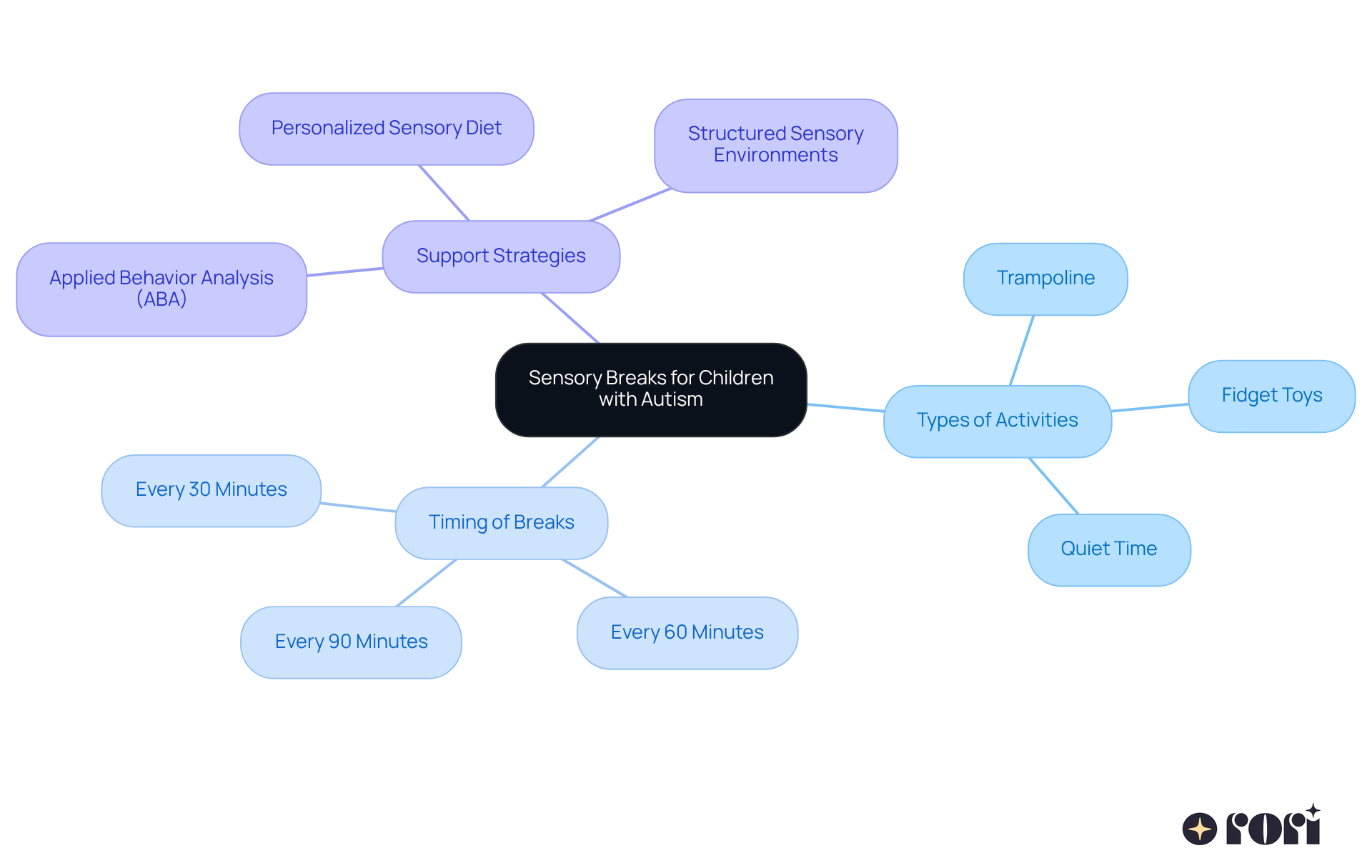
Positive reinforcement is such a powerful strategy! It’s all about rewarding those desired behaviors to encourage kids to keep it up. For children with autism, examples of coping strategies for autism might include a simple verbal acknowledgment, a small treat, or even some extra playtime when they show those positive behaviors. Research shows that this approach can really boost self-esteem in autistic individuals, helping them feel a sense of achievement and encouraging more positive interactions.
To make this work effectively, parents can start by pinpointing specific behaviors they want to reinforce. Then, providing immediate rewards helps strengthen that connection. This organized method not only inspires kids but also builds their self-esteem, leading to better social skills and emotional health.
Behavior analysts emphasize that consistent reinforcement can change how young people see themselves, and they often provide examples of coping strategies for autism to boost their confidence in their abilities and interactions. Plus, when caregivers are equipped with ABA principles and strategies, they can better support their children’s behavioral goals through active participation and data collection. This kind of education leads to informed decision-making and improved behavioral outcomes, which is a win-win for kids facing challenges like ADHD and learning disabilities.
As Veronika Marcincakova Husarova points out, physiological responses like oxytocin levels can relate to interpersonal skills. This really highlights how important positive reinforcement is in nurturing those emotional connections. Let’s explore this together and see how we can make a difference!
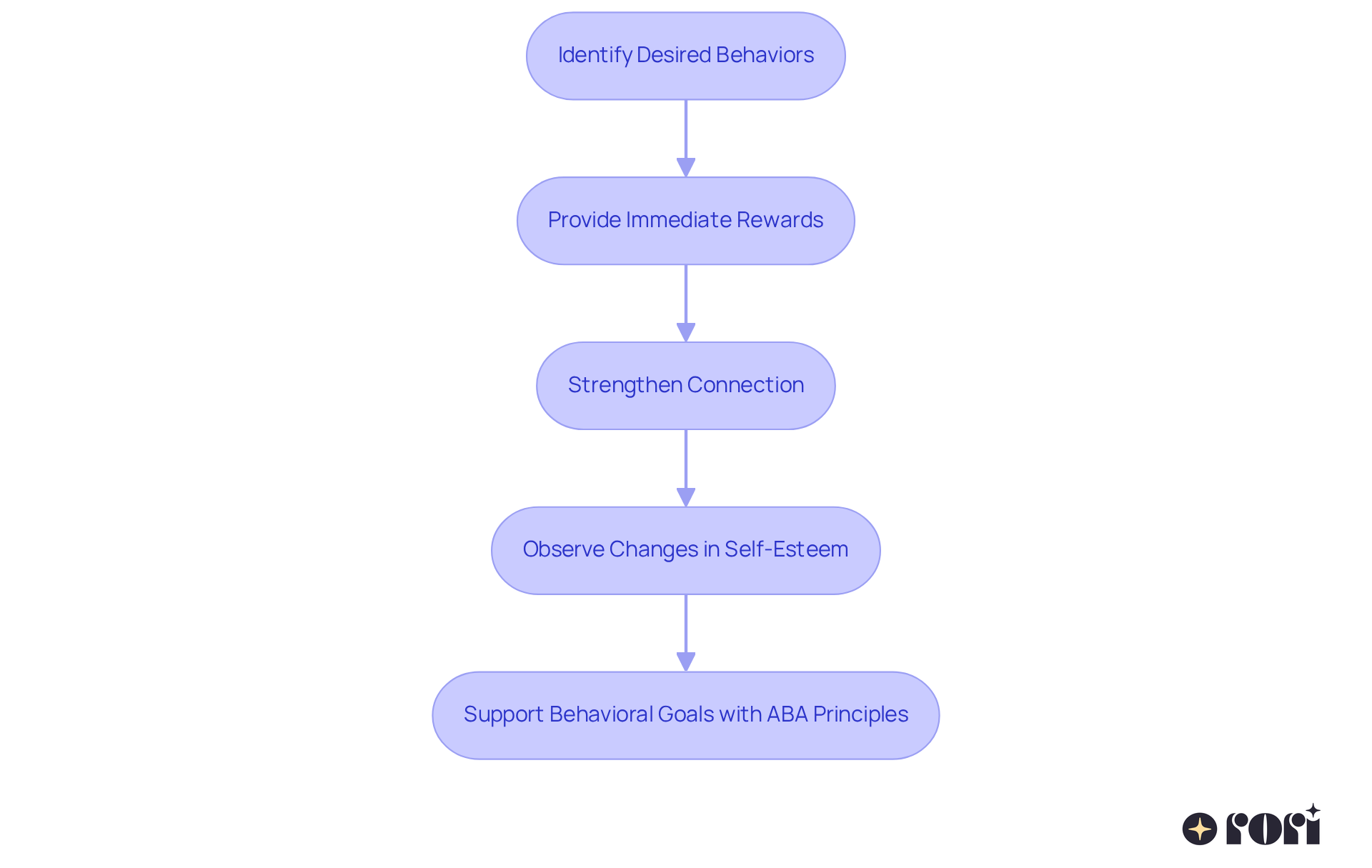
Organized playtime offers kids with autism a fantastic chance to build those all-important interpersonal skills in a safe and fun environment. Think about activities like turn-taking games, cooperative building projects, and role-playing scenarios. These are not just games; they’re powerful tools that help young ones learn how to interact with their peers, share, and communicate effectively.
Research shows that play-oriented education can really boost how kids connect with each other. Those who engage in organized play often show improved communication skills and stronger emotional ties with their friends. Plus, specific ABA techniques, like using token boards to reward positive interactions or modeling appropriate behaviors, can be seamlessly woven into these play sessions.
As parents, you can play a crucial role in these moments by setting clear expectations and guiding interactions. This support helps kids navigate the sometimes tricky world of social dynamics. By taking this structured approach, you’re not just helping them develop essential social skills; you’re also nurturing emotional bonds that lay the groundwork for healthier friendships.
And here’s a tip: regularly reviewing and adjusting play activities based on your child’s progress and interests can make a world of difference. Let’s explore this together! Your involvement can truly enhance their development and make playtime even more rewarding.

Adjustment methods serve as essential examples of coping strategies for autism, helping kids navigate changes in their routines. Think about it: when kids know what’s coming next, it can make all the difference! Simple strategies like:
are great examples of coping strategies for autism that can help young ones prepare for transitions. Research shows that visual aids can boost on-task behavior and ease those tricky transitions, making them a must-have tool in our toolkit. For example, visual schedules are effective examples of coping strategies for autism that not only help kids perform independently but also cut down on anxiety when routines shift.
Educators often emphasize the importance of practicing these strategies regularly. It’s all about helping kids get used to moving from one activity to another. One teacher shared, "Using visual aids not only boosts understanding but also creates a sense of safety for young learners as they anticipate changes." This kind of preparation can truly enhance a child’s ability to handle changes, leading to greater independence and confidence in various settings.
So, let’s explore this together! By embracing these methods, we can support our kids in feeling more secure and ready for whatever comes next.

Parent-led interventions are a vital way for families to get involved in their children's autism care. By using examples of coping strategies for autism that were learned in therapy sessions at home, parents can reinforce important skills and behaviors. This creates a consistent support system that really boosts the effectiveness of interventions. Research shows that when parents are involved, kids with autism spectrum disorder (ASD) see significant developmental improvements. Studies have demonstrated that these children thrive with parent-implemented interventions (PIIs) in various situations.
This active involvement not only strengthens the bond between parents and their children but also helps parents become effective educators and motivators on their child’s journey. At Rori Care, we’re here to support families with compassionate Applied Behavior Analysis (ABA) treatment. We provide caregivers with the knowledge and strategies they need to help their children reach their behavioral goals. Parents are encouraged to seek out training and resources, including examples of coping strategies for autism, like caregiver education programs, which can enhance their ability to provide informed support at home.
This education leads to better behavioral outcomes and empowers caregivers, reducing stress and improving family dynamics. Plus, the emotional support that parents provide is crucial in helping children navigate their unique challenges, ensuring they can face these obstacles with confidence and resilience. As Devan Clayton points out, "Children with autism spectrum disorder (ASD) have been shown to benefit from parent-implemented interventions (PIIs)." This really highlights how important parental involvement is in fostering positive outcomes.
Let’s explore this together! We’re here to help you every step of the way!
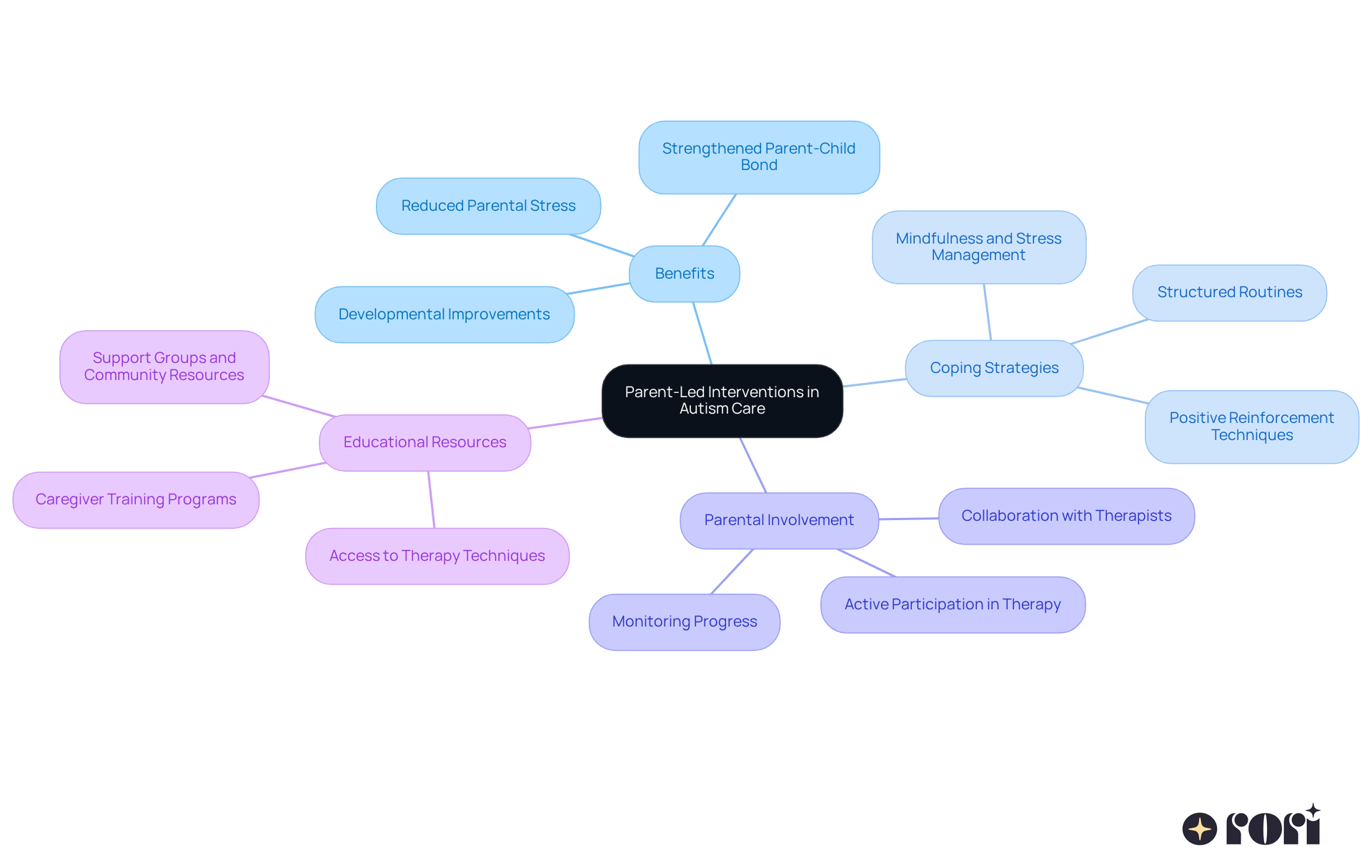
Working together with educators is so important for providing youth with autism the steady support they need in various settings. At Rori Care, we’re here to help your family navigate this journey through compassionate Applied Behavior Analysis (ABA) treatment. We empower caregivers with the knowledge and strategies they need to support their children's behavioral goals.
It’s essential for parents to keep the lines of communication open with educators and therapists. Sharing insights about your child’s unique needs and progress can make a world of difference! This partnership helps create tailored educational strategies that align with therapeutic goals, fostering a unified approach to your child’s development.
Regular check-ins and updates are key! They allow parents and educators to collaborate effectively. Research shows that ongoing support in both home and school environments significantly enhances developmental outcomes for autistic youth, promoting their overall well-being and success. For instance, studies indicate that children who receive coordinated support from both caregivers and educators show improved social skills and academic performance.
Notable figures in autism care stress the importance of effective communication. Dr. O. Ivar Lovaas once said, "If they can’t learn the way we teach, we teach the way they learn." Parents can strengthen their collaboration by scheduling regular meetings with teachers, discussing strategies that have worked at home, and proactively addressing any challenges that come up.
This approach not only benefits your child but also builds a supportive network among everyone involved. It truly reflects Rori Care's commitment to neurodiversity and the success of children. Let’s explore this together! We’re here to help you every step of the way!
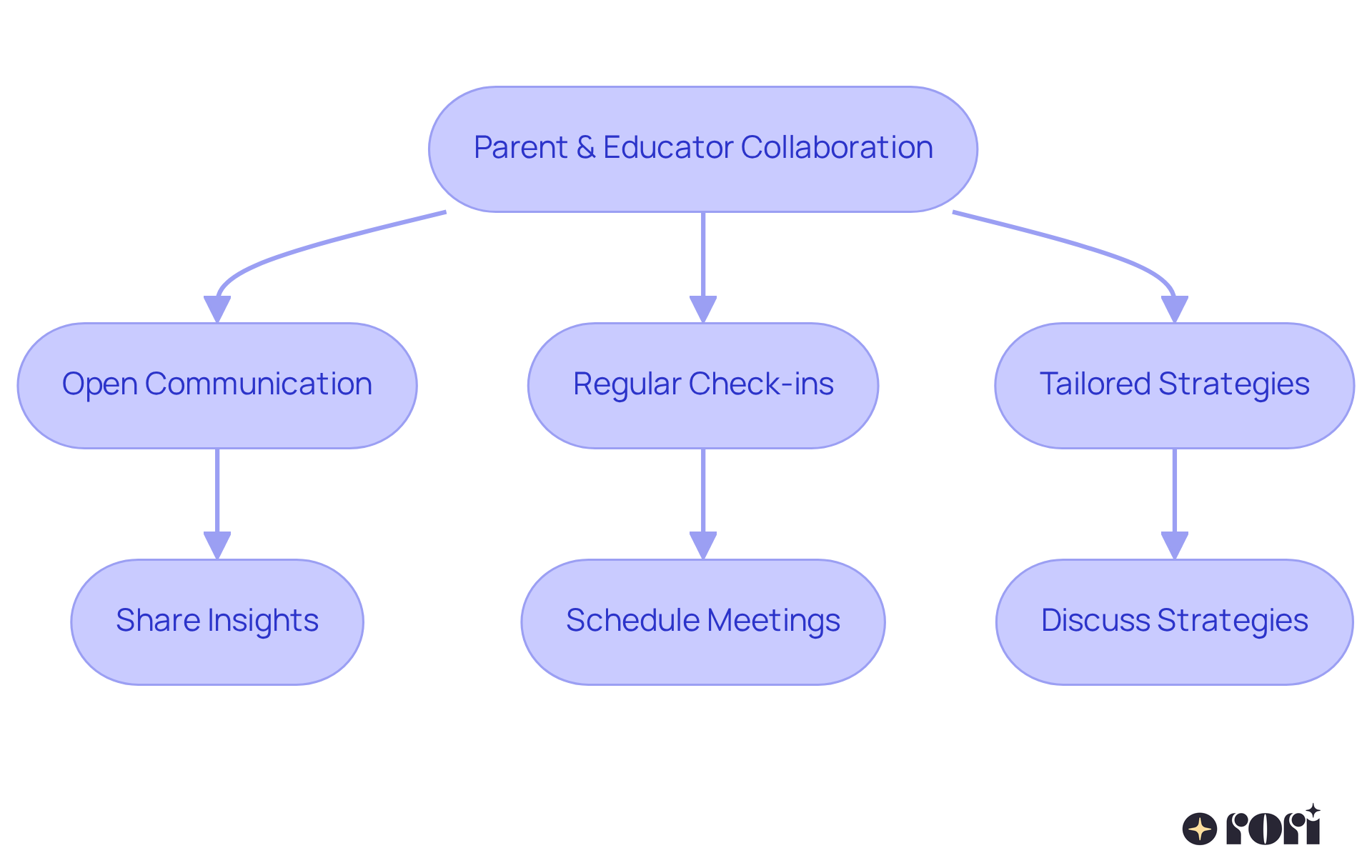
Implementing effective coping strategies for autism is so important for helping our kids build resilience and adaptability. By using tailored interventions like:
parents can really boost their child's ability to tackle daily challenges. When we focus on personalized approaches, we ensure that each child’s unique needs are met, giving them the tools they need to succeed.
Throughout this journey, we’ve highlighted some key strategies, like the importance of:
Parents play a crucial role in reinforcing the skills learned in therapy, and keeping an open line of communication with teachers creates a consistent support system that truly benefits our children’s development. These strategies not only help improve emotional regulation and social skills but also empower our kids to navigate their environments with greater confidence.
Ultimately, supporting a child with autism is a team effort that involves caregivers, educators, and specialized therapy providers. By embracing these effective coping techniques, families can create nurturing environments that foster growth and independence. Let’s stay proactive and engaged, continually exploring new strategies and resources to ensure that every child can thrive on their unique journey. We’re here to help you every step of the way!
What is Rori Care's approach to ABA therapy for autism?
Rori Care uses Applied Behavior Analysis (ABA) therapy to create personalized coping strategies for autism. This begins with a thorough assessment to understand each child's specific challenges and strengths, blending data-driven insights with a compassionate approach to provide effective interventions.
How does Rori Care involve parents and caregivers in the therapy process?
Rori Care empowers parents and caregivers by educating them on ABA principles and techniques, allowing them to actively participate in the therapeutic journey. This involvement strengthens home strategies and enhances their ability to support their child's behavioral goals.
What are visual schedules and how do they help children with autism?
Visual schedules are tools that use pictures or symbols to represent daily activities, helping children with autism understand their routines. They reduce anxiety by providing predictability and structure, and can enhance communication skills, especially for non-verbal children.
How can parents create visual schedules at home?
Parents can create visual schedules by breaking down daily tasks into manageable steps and using pictures or symbols to represent each activity. This allows children to check off completed tasks, promoting time management skills and a sense of achievement.
What are social stories and how do they benefit children with autism?
Social stories are personalized narratives that help children with autism navigate social interactions and understand expected behaviors. They reduce anxiety in new situations and boost social skills by preparing children for various social encounters.
What steps can parents take to create effective social stories?
To create effective social stories, parents should identify a specific social situation, use clear and concise language, include visuals, outline expected behaviors, and review the story regularly with their child to reinforce learning.
How does Rori Care ensure the effectiveness of these coping strategies?
Rori Care's clinical leadership team applies ABA principles to help achieve behavioral goals, ensuring that coping strategies like visual schedules and social stories are effectively utilized to promote neurodiversity and success for children with autism.